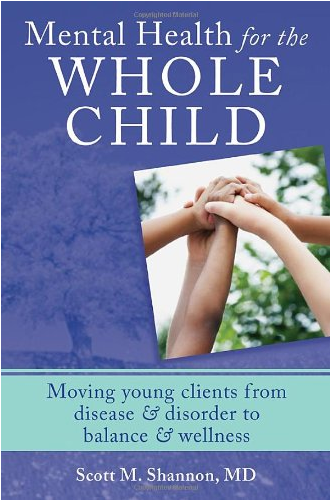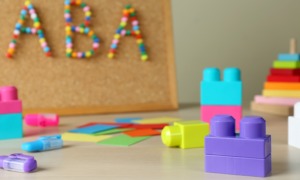 Mental Health for the Whole Child: Moving Young Clients from Disease & Disorder to Balance & Wellness
Mental Health for the Whole Child: Moving Young Clients from Disease & Disorder to Balance & Wellness
Scott M. Shannon, MD
W.W. Norton & Company, 2013
416 pages
By Jami Jones
People who work with children and teens may have suspected a growing reliance on prescription drugs to treat a variety of mental-health. Recent studies confirm these suspicions. But Scott Shannon belongs to a growing number of doctors who eschew prescription drugs before establishing trusting relationships with young patients to understand their many dimensions and the environments in which they live, learn, and play.
Shannon, who completed a psychiatric residency at the Columbia Program, Cooperstown, N.Y., and a Child/Adolescent Psychiatry Fellowship at the University of New Mexico, writes: “Although I use prescription medication at times, I much prefer to employ natural methods like nutrition, supplements, mind-body skills, acupuncture and a shift in awareness to support the healing process.” It is this shift from the quick pharmaceutical fix to understanding the complexity and integration of the young person’s system that is Scott’s message in the book “Mental Health for the Whole Child: Moving Young Clients from Disease & Disorder to Balance & Wellness.”
Integrative medicine’s focus on health as a mind-body-spiritual connection requires us to move from the medical approach that a child’s “deficits” can be fixed with a pill and embrace supports as a better way to help children. Shannon writes that mental health is an “innate desire for balance — a wholeness — between brain-body-mind lies at the heart of wellness. Such a balance can’t be achieved by medication alone, but requires a broad, full-spectrum understanding of children’s lives: their diet, social skills, sleep habits, their ability to self-regulate, to find meaning and purpose in life, and their family relationships.”
Shannon’s book begins with a lengthy description of the wholeness perspective for mental health — a necessary antidote to our pill popping and quick-fix society. For some people an integrative approach to wellness runs counter to current protocol. Thus, Shannon’s comprehensive presentation is important to understanding that an alternative approach to wellness requires a different assessment of the child or teen.
The factors that Shannon considers when he assesses mental health — he calls them the building blocks for a healthy balance — are: proper nutrition, connections, sound sleep, engagement, self-regulation, spirituality and family. Each of these buildings blocks influences other building blocks and aspects of health. In Part One of this book, Shannon details these building blocks and ways to assess youth for them.
In Part Two of “Mental Health for the Whole Child: Moving Young Clients from Disease & Disorder to Balance & Wellness,” Shannon explains thoroughly – and in lay terms – the following mental health challenges: ADHD, depression, behavioral issues, anxiety and OCD, bipolar disorder, substance abuse, Autism, and trauma and post traumatic stress disorder. For each disorder he describes risk factors as well as non-pharmocological options to diminish or heal it.
Shannon shares step-by-step treatment plans for these disorders and describes children and teens he has treated successfully using the building-block framework for healthy balance. Sample forms for intake and assessment and collaborative treatment are included as appendices that would be useful for youth workers to gain insight into a child or teen’s mental health. The book also provides a helpful glossary of terms and conditions.
Shannon’s integrative approach to mental health is buoyed by research that provides evidence to readers that the pharmaceutical approach to mental health may be counterproductive to what we seek — improving mental health. This book provides an intelligent discussion about an alternative approach to improving mental health that complements approaches such as resiliency and ASCD’s Whole Child Initiative. To lay people, these building blocks make sense, and are actions that can easily augment daily dealings with youth. At the very least, Scott’s message nudges us to consider adding these important building blocks for mental health into the environments in which children and teens live, learn and play.






























